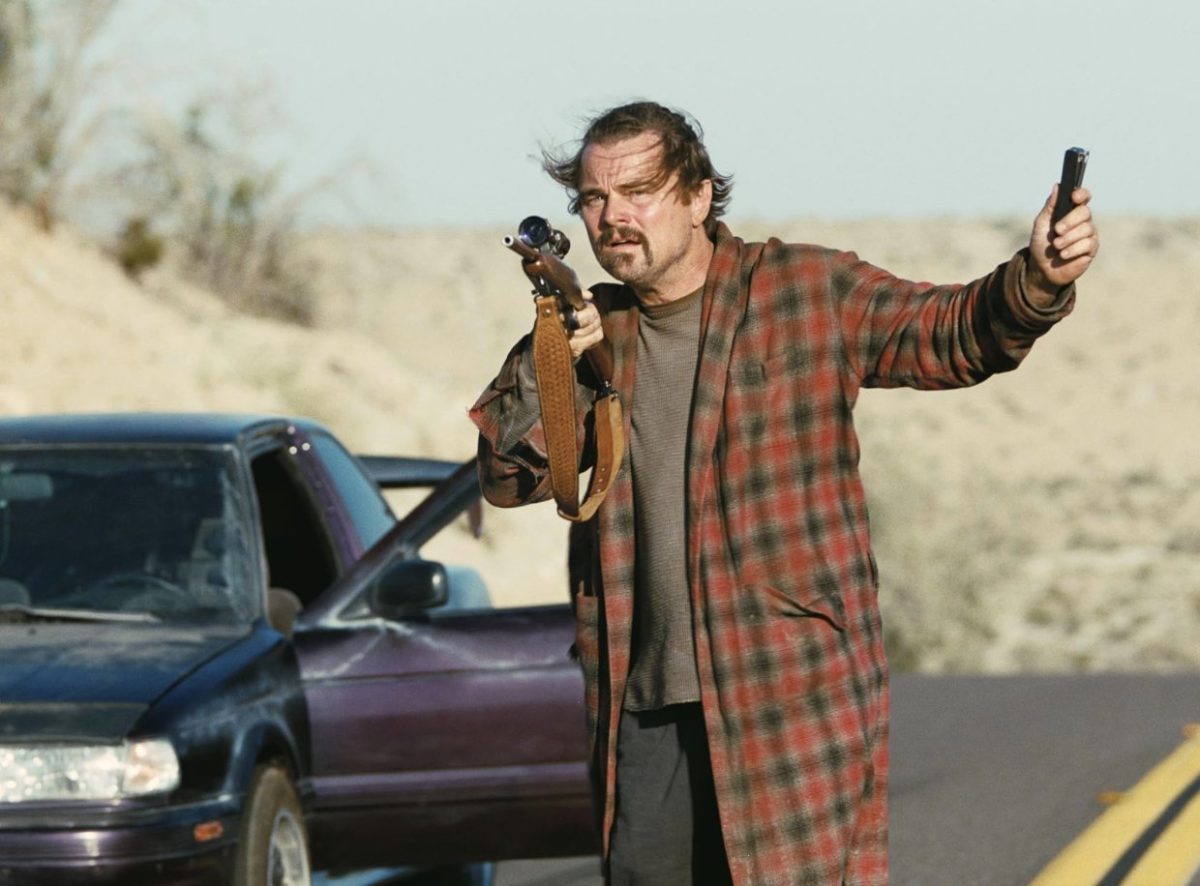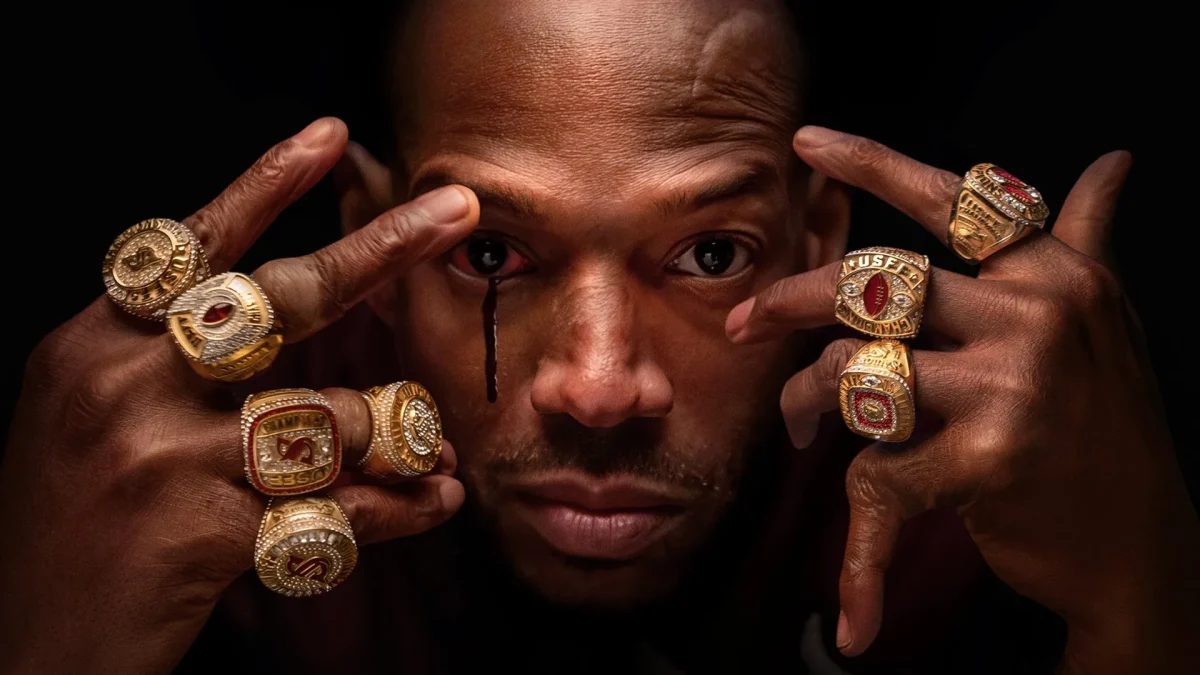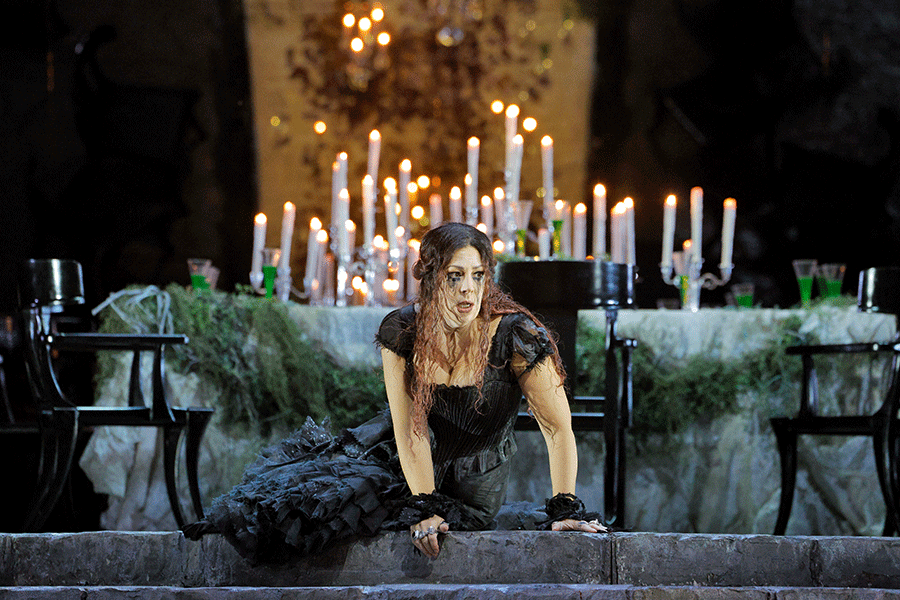Rust is, at heart, a movie about fate. Not about inevitability, mind you, about the wicked getting what is coming to them—on the contrary, when something is coming in this story, it does so for the innocent and the undeserving, and they rarely get to see it coming, either.
The film opens with Lucas Hollister (Patrick Scott McDermott), a young boy of thirteen who lives alone with his tiny brother Jacob on a small Wyoming farm in 1882. It’s a hard life, one that gets harder when a pair of brothers picks on Jacob during an errand at the town store—eventually leading Lucas to have to shoot the boys’ father. Sentenced to hang, Lucas is violently removed from jail by a strange bearded man—who turns out to be his grandfather, Harland Rust (Alec Baldwin). Rust’s notoriety as an outlaw earns him and his grandson the pursuit of both atheistic lawman Wood Helm (Josh Hopkins) and menacing holiness-spouting bounty hunter Fenton Lang (Travis Fimmel).
The movie is, on the whole, well-cast. Fimmel’s Lang is soft-voiced and psychopathic, a completely-sold character. McDermott is at his best at the beginning, before his glaringly young voice starts clashing with his tough talk. Baldwin, for his part, is a solid presence as the fugitive who is used to a hard life and will do whatever is necessary to keep living.
The true strength of this story, though, lies in its theme. In the world of Rust, justice does not exist and fate helps no one. Lucas loses his mother to illness, then his father to suicide—then is branded a murder because he kills a man who would try to take him away from his brother, the only thing he has left. Harland Rust blows up branches of the same bank that confiscated his farm—which was ruined in a flood that also killed his son and, by extension, his wife. The law punishes these people for simply reacting to the terrible things that happen to them, and their punishments are not necessarily humane. When people are hung for their crimes, for instance, they may die, or they may spend an hour or two in broken-necked, eye-popping agony. Nor are people within the law safe from cruel fortune: the main legal figure in this movie, Wood, can bring down a drunken murderer but cannot stop his eight-year-old son from dying of sickness.
Those twin messages of cruel fate and persecution make two things strangely fitting about Rust. One is that the movie literally killed someone: during filming, a prop gun went off in Alec Baldwin’s hands and released a live round that hit and killed cinematographer Halyna Hutchins. The other is that the film takes place during the US’s period of westward expansion, the genocide of Native people—one of the most extensive periods of persecution and unfriendly law in all of American history. The movie’s handling of that fact, as far as I can tell from my Googling, is accurate and acceptable (though I wasn’t able to verify one detail about Kiowa raiding parties painting their horses.)
There are still imperfections here. For one, Harland has brief but pointed moments of off-puttingness: he casually refers to Mexicans with a slur in one conversation, and in another mentions that he was almost two decades older than his wife when he married her. (Other uncomfortable language includes a deputy calling gang members “Mexicans and half-breeds” and the fairly-often use of an anti-gay slur as an insult. That said, instances of both are fleeting.) Meanwhile, the film makes use of several montages, which, despite being excellent showcases of Halyna Hutchins’ work, struck me more as music-accompanied screensaver collections than helpful ways of telling the story.
Nevertheless, I enjoyed Rust—and I’m not the only one. “I really liked the atmosphere of the movie straight from the beginning, with all of the dirt and grime that was on almost everything,” senior Andrei Nague said of the film. Nague added that “if you’re a big fan of escape movies there’ll definitely be something to appreciate in this movie.”
Without question, Halyna Hutchinson should be alive today to see the fruits of her work—but for lack of that, her mother has encouraged the public to see her last movie. Allow me to add that it is worthwhile to do so. If we cannot resurrect Rust’s cinematographer, we can at least, as numerous other reviews of this movie have done, honor her gifts. If order only exists because we impose it, Rust’s ending suggests that justice works the same way. Accompanied by assurances that the movie’s first producers will not make money off of the film, while Hutchinson’s family will gain financially, this may be as close to justice as we can get.









